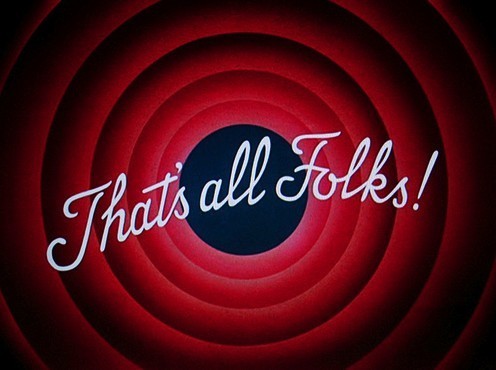Internet Debris

A collection by Neal McKenna
McKenna Ink Thesis Editing Service
To add your comments,
click here.
Internet Debris

A collection by Neal McKenna
McKenna Ink Thesis Editing Service
To add your comments,
click here.
Internet Debris

A collection by Neal McKenna
McKenna Ink Thesis Editing Service
To add your comments,
Offbeat math:
Sizing up a world
of 7 billion people

It's a crowded world, after all... The largest beach in Asia is also the most crowded beach in the world, located on Huiquan Bay in Qingdao, Shandong Province, China.
Image via 10 Top Marvels
The UN's forecasters have estimated that Oct. 31, 2011 was the day world's population passed the 7 billion mark. Seven-thousand-million is a staggering number, and CBC News had some fun compiling this list to help put the idea of that many people into perspective.(Please note, when dealing with a crowd of 7 billion people of varying age, sex, height, appetite, fitness level, and shoe size, the endeavour is far from an exact science. These calculations are based on best estimates and averages.)
Take a deep breath
We all need air, but how much of it do 7 billion people consume?People breathe at different rates, depending on their age, sex, fitness level and what they're doing at the time. In broad strokes, though, the average person breathes about 8 litres of air every minute while at rest, or about11,520 litres a day.
So the world's population inhales at least 80,640,000,000,000 (80.6 trillion) litres of air a day, and converts more than 3,850,000,000,000 (3.85 trillion) litres of oxygen to carbon dioxide.
A University of California study determined that the average person breathes about 52 litres a minute when running, so if the entire world went jogging together for an hour we'd breathe about 21,840,000,000,000 (21.8 trillion) litres of air.
One hectare of average forest creates about enough oxygen to support 19 people, according to the U.S. Forest Service. Using that as the benchmark, the world's population needs at least 368,421,052 hectares of forested land to provide us with the air we need – an area roughly 650 times the size of PEI and 5 times the size of Manitoba.

Food, water and gas
Part of humanity over-eats, others don't get nearly enough food. But the average human ideally needs around 2,200 calories a day, or15,400,000,000,000 (15.4 trillion) calories for the human population.If you wanted to "supersize" the world, the necessary calorie count works out to about 28,518,518,519 McDonald's Big Macs a day.
No matter what people may claim, everyone is a little gassy (particularly after eating things like fast food). According to the U.S. Department of Health and Human Services, the average person passes gas anywhere from 14 to 23 times a day, producing a daily average of about a litre of flatulence (made up of carbon dioxide, oxygen, nitrogen, hydrogen, and methane). Humanity's daily cloud of 7 billion litres of gas is enough to fill Toronto's Rogers Centre (formerly known as the SkyDome) about four and a half times. Try blaming that on the dog.
The average person should drink about 2.5 litres of water a day, according to studies by the U.S. Institute of Medicine. If everyone got the drinking water they needed, the world's population would consume about 17.5 billion litres a day, or the equivalent of about 7,000 Olympic-sized swimming pools. It would take the proposed Keystone XL pipeline expansion in Western Canada, which is designed to carry around 500,000 barrels of oil a day, about 220 days to transport that much water.
Given that the average person passes about 2 litres of urine a day, the world would subsequently relieve itself of about 5,110,000,000,000 (5.1 trillion) litres a year. That's equivalent to the amount of water that flows over Niagara Falls in about two and a half hours when the falls are at their peak.

Being Social
It takes about one second to say "hello" to someone. Assuming you wanted to greet the world's entire population of 7 billion one at a time, it would take you roughly 222 years of working the crowd non-stop.A gigabyte works out to the equivalent of about 100,000 short emails. An entry-level home internet plan from Bell includes 2 gigabytes of internet use a month plus a $2.50-per-gigabyte charge for any extra bandwidth used. If you wanted to e-mail a "hello" to everyone on Earth individually from that basic internet account, it would cost you $26.95 for the monthly internet plan, plus about $174,995 for the extra bandwidth you'd need. (Of course, you could save some cash by opting for one of Bell's bigger-bandwidth packages.)
Follow the money:
According to the Forbes list of the world's billionaires for 2011, the world's richest man was Carlos Slim Helu from Mexico, with a net worth estimated at $74 billion US. He could afford to treat every person on Earth to lunch at Tim Hortons – a sandwich and extra-large coffee, plus a box of 20 Timbits to take home for later.If the U.S. military budget for 2011 was shared out to the world's population, each person would get roughly $100. Based on average annual income, that's about two months' salary for people in places such as Malawi and Somalia, according to the International Monetary Fund, or a bit less than the average North American spends in a day.
A really, really big show:
Human chain
If you flew everyone in for the concert, it would take 28 million flightsusing Boeing's new 787-8 Dreamliner.
If they all flew to the mainland and came over the Confederation Bridge in Toyota Corollas, the best selling car in the world, at 4 people per car the line of bumper-to-bumper traffic would stretch roughly 9.6 million kilometers, or go around the earth at the equator more than 240 times. (And it would be very difficult to find your car after the show.)

And that chain is growing. At a global birth rate of 19.15 per 1,000 population, about 4.4 babies are born every second.

Text & Images via CBC News
How We Got to 7,000,000,000
Our landmark world population of 7 billion comes just 12 years after the total reached six billion. The rate of increase is staggering. Many people alive today were born when the world population was less than two billion. And Britain is mirroring the world's expansion. In 1801, our population was 10.5 million — today it is close to 62 million.
Here is the story of the planet's rising population.

LONELY BRITAIN
Humans only reached Britain 30,000 years ago. When people first left Africa they followed warm coastal routes and headed south.ICY START
When the last big Ice Age began 70,000 years ago, there were just 15,000 Homo sapiens — the Latin name for modern humans — and none lived in the area that was to be called Britain.QUE?
Three out of four Brits have DNA showing they are descended from people who emigrated from Spain up to 15,000 years ago, says geneticist Stephen Oppenheimer.RAPID GROWTH
By 1300, the population of England, Scotland and Wales hit six million. The world population was around 450million.
Soaring ... graph showing rapid rise in human population
VICTIMS OF OUR OWN SUCCESS
Crowded towns and cities helped diseases evolve. Thanks to the Black Death, a plague caused by fleas on rats, the British population fell to three million by 1350.VICTORIA'S BOOMERS
During the reign of Queen Victoria, industrialisation helped the British population rise from 10.5million in 1801 to 38million in 1901. The world's total rose from 900million to 1.6billion.MEDICAL MIRACLES
Vaccines, antibiotics and pesticides led to a population boom. The UN estimates the world's population was 1.65bn in 1900, 1.86bn in 1920, 2.3bn in 1940, 3.02bn in 1960, 4.44bn in 1980, 6.12bn in 2000 and seven billion today. The UK population was 38million in 1900, 44m in 1920, 49m in 1940, 53m in 1960, 56m in 1980, 59m in 2000 and 62m today.GOING SOUTH
One in three Brits lives in south east England with almost 8.5million in London alone. Scotland has around 5.3million people, Wales just over three million and Northern Ireland 1.8million.OLD WOMEN RULE
In the last UK census in 2001, there were 5.6million males and 5.3million females aged 14 or under. There were 20.2million males and 19.7million females aged 15 to 64. But women are more numerous as there were 5.5million females aged 65 or over compared to four million males.LIFE EXPECTANCY
THE FUTURE
Fertility rates worldwide have fallen dramatically. In 1950 the world fertility rate was 4.95 children per woman, by 1975 it was below four and today it is less than three. The birth rate still exceeds the death rate but the gap is narrowing and the population may level off at around ten billion in 2100. Images & Text via The SunTo add your comments, click on
links to this post
here or below. It will take you to a stand-alone copy of this page. There, you will find the comments box, so feel free to let 'er rip.




No comments:
Post a Comment